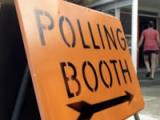The establishment of New Zealand’s first centralised electronic database through the Wanganui Computer Centre Act focused attention on the state’s ability to gather information about its citizens.
Whanganui City
Events In History
The 23-year-old Olympic 800-m champion hoped to run the first four-minute mile on New Zealand soil. In fact, he broke Australian Herb Elliott’s 3½-year-old world record by the smallest possible margin, 0.1 seconds.
Charles Ewing Mackay, the disgraced former mayor of Whanganui, was shot dead by Berlin police during May Day riots in the German capital.
The victim of the shooting, poet Walter D’Arcy Cresswell, alleged that Mayor Charles Mackay had made homosexual advances towards him in the mayoral office and panicked when faced with the prospect of public exposure.
The large wooden building on St Hill Street has been a jewel in Whanganui’s crown for more than a century.
A Māori raid on the Gilfillan farm at Matarawa, just east of Whanganui, left four members of the family dead. The artist John Gilfillan and one of his daughters were severely wounded.
Articles
Election Days

When New Zealanders go to the polls on 26 November 2011, they will continue a 158-year-old tradition of parliamentary democracy in this country. Politics may have changed beyond recognition since 1853, but the cut and thrust of the campaign trail, the power of advertising, and the drama of polling day remain as relevant as ever. Read the full article
Page 4 - Nights on the town
After the colour and controversy of the 1850s, election days in New Zealand have generally been orderly affairs. Even so, election nights could still be lively
War in Whanganui

The confusion and uncertainty that had surrounded the New Zealand Company's land purchases in Whanganui erupted into violence in the autumn and winter of 1847. The conflict also involved long-standing rivalries between upper and lower Whanganui River Māori. Read the full article
Page 1 - War in Whanganui
The confusion and uncertainty that had surrounded the New Zealand Company's land purchases in Whanganui erupted into violence in the autumn and winter of 1847. The conflict also
Page 2 - Background
From the outset there was confusion and uncertainty over the exact nature and extent of the New Zealand Company's purchase at
Page 3 - The Matarawa killings
The killing of Mary Gilfillan and three of her children caused tension between upriver and downriver Māori as well as among
Page 4 - The siege of Whanganui
Te Mamaku led 700 Ngāti Hāua-te-rangi fighters who attacked Whanganui in May
Page 5 - Moutoa Island
The Pai Mārire religion divided Māori. Some supported it, but others mistrusted its political intent. Events on the Whanganui River in 1864 showed the conflict about the faith
Page 6 - The 1865 campaign
Following the battle of Moutoa Island in 1864, Hīpango pursued the retreating Pai Mārire (Hauhau). Fighting continued from fortified positions upriver, near
The 1920s
The 1920s was the decade that modern New Zealand came of age. Despite political and economic uncertainty, the country shrugged off the gloom of war to embrace the Jazz Age - an era of speed, power and glamour. Explore an overview of the decade and a year-by-year breakdown of key events. Read the full article
Page 3 - 1920 - key events
A selection of key New Zealand events from
Regional rugby
The passion and parochialism of provincial rugby helped give the game a special place in New Zealand’s social and sporting history. Read brief histories, highlights and quirky facts about each of New Zealand's 26 regional rugby teams. Read the full article
Page 16 - Whanganui rugby
History and highlights of rugby in the Whanganui
Situated at the mouth of the Whanganui River, and ancestral home to Te Āti Haunui-a-Pāpārangi hapu, Whanganui is one of New Zealand's oldest cities. It was the New Zealand Company’s second settlement, and began as an adjunct of the first, Wellington, in 1840. In the mid 1860s the town was under threat of attack by Pai Mārire adherents. Redoubts (fortifications) were built to the north-west and along the river, and troops were deployed. Whanganui became a city in 1924, when it was New Zealand’s largest urban area after the four main centres. Slow growth in the hinterland also hindered Whanganui’s growth during the latter half of the twentieth century, but a diversified economy has seen the town grow in the last few decades.














































